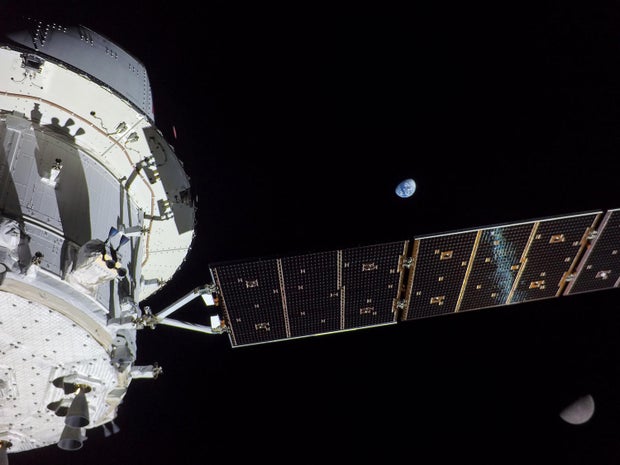Artemis 1 spacecraft heads for Sunday splashdown to wrap up historic mission
Closing out a 25-day voyage around the moon, NASA’s Artemis 1 spacecraft closed in on Earth Saturday, on track for a 25,000-mph re-entry Sunday that will subject the unpiloted capsule to a hellish 5,000-degree inferno before splashdown off Baja California.
In an unexpected but richly-symbolic coincidence, the end of the Artemis 1 mission, expected at 12:39 p.m., will come 50 years to the day after the final Apollo moon landing in 1972.
Testing the Orion capsule’s 16.5-foot-wide Apollo-derived Avcoat heat shield is the top priority of the Artemis 1 mission, “and it is our priority-one objective for a reason,” said mission manager Mike Sarafin.
“There is no arc jet or aerothermal facility here on Earth capable of replicating hypersonic reentry with a heat shield of this size,” he said. “And it is a brand new heat shield design, and it is a safety-critical piece of equipment. It is designed to protect the spacecraft and (future astronauts) … so the heat shield needs to work.”
NASA
Launched November 16 on the maiden flight of NASA’s huge new Space Launch System rocket, the unpiloted Orion capsule was propelled out of Earth orbit and on to the moon for an exhaustive series of tests, putting its propulsion, navigation, power and computer systems through their paces in the deep space environment.
While flight controllers ran into still-unexplained glitches with its power system, initial “funnies” with its star trackers and degraded performance from a phased array antenna, the Orion spacecraft and its European Space Agency-built service module worked well overall, achieving virtually all of their major objectives to this point.
“We’ve collected an immense amount of data characterizing system performance from the power system, the propulsion, GNC (guidance, navigation and control) and so far, the flight control team has downlinked to over 140 gigabytes of engineering and imagery data,” said Jim Geffre, the Orion vehicle integration manager.
NASA
The team is already analyzing that data “to help not only understand the performance on Artemis 1, but play forward for all subsequent missions,” he said.
If all goes well, NASA plans to follow the Artemis 1 mission by sending four astronauts around the moon in the program’s second flight — Artemis 2 — in 2024. The first moon-landing would follow…
Read More: Artemis 1 spacecraft heads for Sunday splashdown to wrap up historic mission


